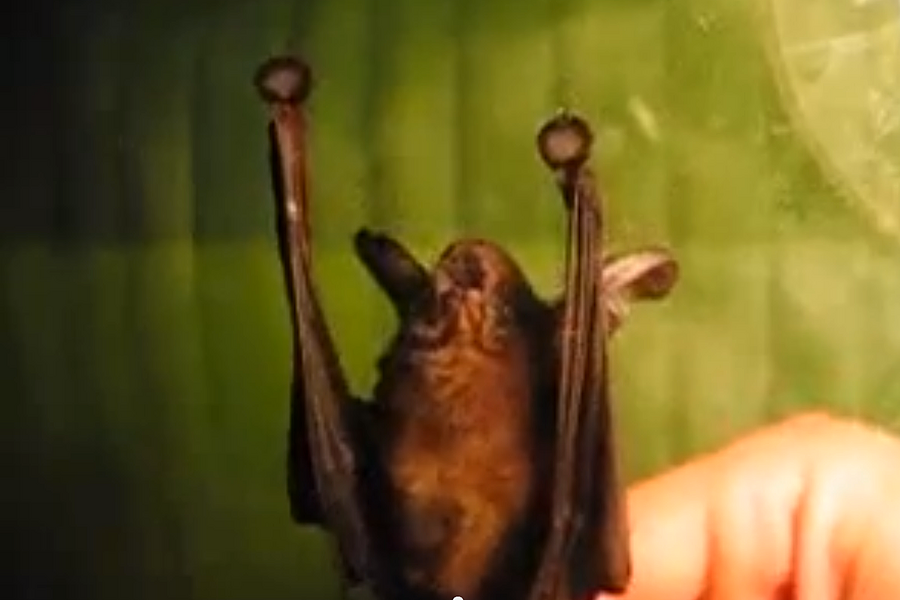Holy Missing Link, Batman! Ancient bat lineage unearthed in Egypt.
Loading...
The mysterious habits of sucker-footed bats have long stumped scientists.
For instance, biologists who have caught hundreds of males have been unable to capture even a single female. The animals apparently have no parasites. And, unlike normal bats, they sleep upright by daubing their sweaty, circular feet onto the smooth insides of leaves.
But paleontologists have finally cracked one big mystery about these thumb-sized enigmas: their origins.
Myzopoda aurita and Myzopoda schliemanni, which live on opposite sides of Madagascar – 286 miles off the coast of mainland Africa – are the world's only known sucker-footed bats, and the only members of their Myzopodidae family. Until now, no fossil evidence had emerged to explain their origins, though their DNA clearly linked them to overseas bat families in South America, New Zealand, and Australia.
But five tiny jawbones excavated in Egypt's Fayum Depression, over 3,000 miles north of Madagascar, have finally been identified as belonging to their Eocene-era ancestors.
"We had a good idea that these bats on Madagascar were somehow related to the ones in South America because of the DNA, but we didn't have any fossil record," says Gregg Gunnell, director of the Duke Lemur Center's Division of Fossil Primates, who co-authored the study. "We now know that they lived in Africa for sure." The finding, he says, "extends the temporal and geographic range of this family by a tremendous amount."
It may seem unsurprising that an animal family living on Madagascar would have lived in Africa at some point, but these bats had no known relatives on the mainland, living or fossilized. The new finding, together with other bat bones found in Australia, suggests that bats may have originated and diversified in the eastern part of Gondwana – the ancient supercontinent that included nearly all of the landmasses in today's Southern Hemisphere.
At that time, the future South America had just barely split apart from the future Africa, and Madagascar was tucked tightly among Africa, Australia, and Antarctica.
Dr. Gunnell says that early proto-bats likely arose in the eastern part of that mass – the future Australia and Antarctica – and slowly diversified as their populations moved west, in time to leave populations of Myzopodidae roosting in Africa and Madagascar. Westerly movements of water currents at the time, he says, support that theory.
Genetic evidence predicts that the first bat evolved some 58 million to 60 million years ago, says Gunnell, and the jawbones found in Egypt chomped relatively soon after. According to paleomagnetic dating, they belonged to animals living in the Eocene epoch, which lasted from 56 million to 34 million years ago.
Because the fossils are so old, their radioactive carbon has all but completely decayed, making carbon dating impossible. Instead, scientists analyzed the orientation of magnetic metals in nearby rocks, to find out when in geological history they were formed. Since the Earth's magnetic field slowly and repeatedly reverses over time – switching north with south – the precise magnetic orientation of metals can be used to date geological layers.
Dating this particular bat family back to the Eocene Period may provide an important clue into early animal populations' movements across the Earth.
"It really does open the door to asking questions about the origins of south American groups," says Gunnell. "Most of us who live in the north are fairly north-centric, but I think the south plays a much bigger role in the origin of some groups of mammals, than some people were willing to give it credit for in the past."








